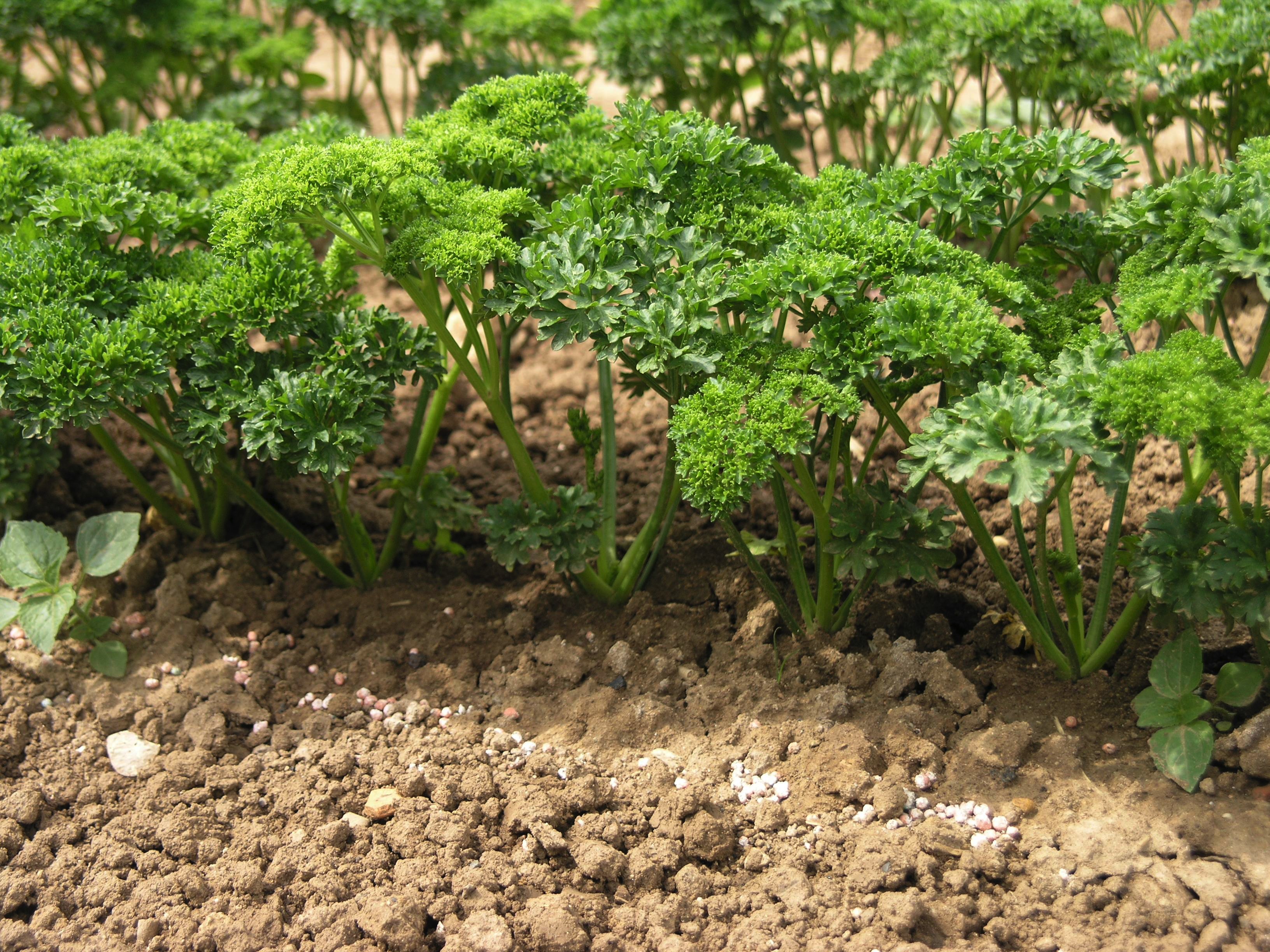

Parsley

Parsley is grown as an annual in this area. Parsley leaves are finely cut, curled or flat and bright green in color. Parsley grows up to 15 inches in height.. Neapolitan(flat leaf) and Crispum(curled leaf) are among many excellent varieties. Flat leaf parsley generally imparts a stronger flavor than curly leaf varieties. Parsley blooms at the end of its life. After small greenish-white blossoms appear, parsley tends to "bolt" and die.
How to grow: Set seedlings after danger of frost has past. Thin to 9 inches apart. For a summer long-harvest, prune plantings every two weeks. Keep well watered.
Propagation: Plant seeds in early spring in full sun to light shade. Parsley prefers a rich, moist, deeply dug soil. For faster germination, soak seeds overnight in warm water. Parsley seeds may be started indoors in a tray. Maintain temperature at 70 degrees.
Harvesting: Harvest outermost stems from a mature plant.. Store Parsley in a glass of water in the refrigerator for up to a week.
Preserving: Dry. When leaves are thoroughly dry, seal in a glass container and store in a dark place. Parsley can also be frozen.
Culinary uses: All Parsleys are rich in vitamins A, B and C, minerals and antiseptic chlorophyll, making it beneficial as well as an attractive garnish. Add raw leaves to salads. Finely chop and use in sandwiches, eggs, soups, fish and boiled potatoes. When cooked, parsley enhances other flavors. Add at the end of cooking time.
Other uses: Use ground Parsley roots in stews and soups. Grate raw into salads. Parsley stems add robust flavor to soups and stews. Use Parsley leaves and stems to make a yellow-green dye.
4116 E. 15th Street
Tulsa, OK 74112-6198
(918)746-3701